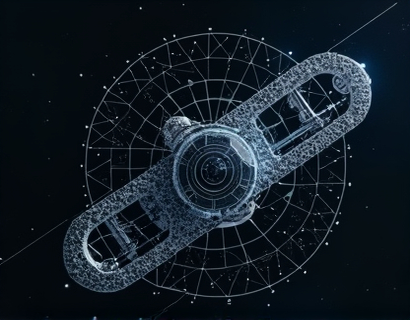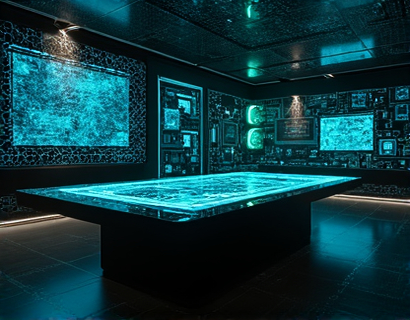Ancient Knowledge Unveiled: Exploring Historical Wisdom and Cultural Heritage
The study of ancient civilizations and their cultural treasures offers a profound window into the past, revealing the intricate tapestry of human history that has shaped our modern world. This exploration delves deep into the realms of historical wisdom and heritage, uncovering secrets and insights that have been preserved through the ages. For history enthusiasts and cultural heritage seekers, this journey provides a unique lens through which to understand the foundations of contemporary society.
The Significance of Ancient Civilizations
Ancient civilizations, such as the Egyptians, Mesopotamians, Greeks, and Romans, laid the groundwork for many aspects of modern life. Their contributions in architecture, governance, philosophy, and art continue to influence us today. The pyramids of Egypt, the Hanging Gardens of Babylon, the Parthenon in Athens, and the Colosseum in Rome stand as testaments to the ingenuity and creativity of these early societies. Each civilization had its unique achievements and challenges, and studying them helps us appreciate the diversity and complexity of human history.
Uncovering Historical Wisdom
Historical wisdom is not just about dates and events; it encompasses the knowledge, beliefs, and practices that have been passed down through generations. Ancient texts, inscriptions, and artifacts provide valuable insights into the daily lives, religious beliefs, and scientific understanding of past cultures. For instance, the Code of Hammurabi, one of the earliest known sets of laws, offers a glimpse into the legal and social structures of ancient Babylon. Similarly, the Vedas and Upanishads from ancient India reveal profound philosophical and spiritual teachings that continue to influence thought and practice today.
Cultural Heritage: A Legacy of Human Achievement
Cultural heritage refers to the legacy of physical artifacts and intangible attributes of a group or society that are inherited from past generations, maintained in the present, and bestowed for the benefit of future generations. This includes tangible heritage such as buildings, monuments, landscapes, books, works of art, and artifacts, as well as intangible heritage like traditions, languages, and knowledge. Preserving cultural heritage is crucial for maintaining a sense of identity and continuity, and for educating current and future generations about their roots.
Tangible Cultural Heritage
Tangible cultural heritage includes physical objects and structures that have historical, artistic, scientific, or cultural significance. Ancient ruins, museums, and historical sites are prime examples. The Great Wall of China, for instance, is not only a marvel of engineering but also a symbol of the country's rich history and resilience. Museums around the world house countless artifacts that tell the stories of ancient civilizations, from Egyptian mummies and Greek pottery to Roman coins and Mayan sculptures. These objects not only serve as physical connections to the past but also as educational tools that bring history to life.
Intangible Cultural Heritage
Intangible cultural heritage is equally vital, encompassing traditions, customs, and knowledge that are transmitted orally or through practice. This includes languages, music, dance, rituals, and traditional crafts. For example, the traditional Japanese tea ceremony, the Indian art of puppetry, and the Australian Aboriginal storytelling are all part of the intangible cultural heritage that enrich our global cultural landscape. These practices not only preserve cultural identity but also foster social cohesion and mutual respect among diverse communities.
Bridging the Gap Between Past and Present
The study of ancient knowledge and cultural heritage bridges the gap between the past and the present, offering valuable lessons and insights that can inform and enrich our contemporary lives. By understanding the successes and failures of ancient societies, we can gain a deeper appreciation of the challenges we face today and develop more sustainable and resilient solutions. For instance, ancient agricultural practices and water management systems can inspire modern approaches to environmental sustainability and resource conservation.
Moreover, the philosophical and ethical principles found in ancient texts can provide guidance in navigating modern moral and social issues. The Stoic philosophy of ancient Greece and Rome, for example, emphasizes virtues such as wisdom, courage, and self-control, which remain relevant in today's fast-paced and often chaotic world. By revisiting these timeless teachings, we can cultivate a more balanced and fulfilling way of life.
Methodologies in Archaeological Research
Archaeology, the scientific study of human history through the excavation and analysis of material culture, plays a crucial role in uncovering and interpreting ancient knowledge and cultural heritage. Archaeologists use a variety of methods and technologies to uncover and analyze artifacts, structures, and environmental data. These include excavation, stratigraphy, radiocarbon dating, and geophysical surveys. Each method provides unique insights that help piece together the puzzle of the past.
Excavation involves the careful removal of soil and debris to reveal archaeological sites. Stratigraphy, the study of rock layers and layering, helps determine the relative ages of artifacts and features. Radiocarbon dating, a method used to determine the age of organic materials, has revolutionized our ability to date ancient objects with precision. Geophysical surveys, such as ground-penetrating radar and magnetic surveys, allow archaeologists to map subsurface features without digging, saving time and resources.
Once artifacts are recovered, they undergo thorough analysis in laboratories. This can include chemical analysis to determine the composition of materials, stylistic analysis to identify cultural influences, and contextual analysis to understand the object's use and significance. The integration of these methodologies provides a comprehensive understanding of ancient cultures and their contributions to human history.
Technology in Heritage Preservation
Advances in technology have greatly enhanced the preservation and study of cultural heritage. Digital tools such as 3D scanning, photogrammetry, and virtual reality are transforming the way we document, analyze, and share archaeological findings. 3D scanning allows for the creation of detailed digital models of artifacts and sites, enabling researchers to study them in unprecedented detail without physical handling. Photogrammetry, the process of creating 3D models from photographs, is particularly useful for documenting large or complex sites.
Virtual reality (VR) and augmented reality (AR) technologies offer immersive experiences that bring ancient worlds to life. VR can transport users to reconstructed ancient cities, allowing them to explore and interact with the environment as it once was. AR can overlay digital information onto real-world sites, enhancing the visitor experience and providing educational insights. These technologies not only aid in preservation but also make cultural heritage accessible to a global audience, fostering a broader appreciation and understanding of our shared history.
Challenges in Preserving Cultural Heritage
Despite the advancements in technology and methodologies, preserving cultural heritage faces numerous challenges. Natural disasters, climate change, and human activities such as urban development and looting pose significant threats to archaeological sites and artifacts. The destruction of cultural heritage sites, as seen in conflicts around the world, underscores the urgent need for robust protection and conservation efforts.
Funding remains a critical issue, as many preservation projects rely on limited resources and grants. International cooperation and support are essential to address these challenges. Organizations and governments must prioritize the protection of cultural heritage, recognizing its value not only for historical and educational purposes but also for its role in promoting peace and understanding among nations.
Educational Initiatives and Public Engagement
Educational initiatives play a vital role in promoting awareness and appreciation of ancient knowledge and cultural heritage. Museums, educational institutions, and cultural organizations offer a range of programs, from lectures and workshops to interactive exhibits and online resources. These initiatives aim to engage the public, especially younger generations, in the study and preservation of cultural heritage.
Public engagement is crucial for the long-term sustainability of heritage preservation efforts. Community involvement in archaeological projects, heritage conservation, and cultural events fosters a sense of ownership and responsibility. By involving local communities, we can ensure that the preservation of cultural heritage is a collective effort that benefits everyone.
Conclusion
Exploring ancient knowledge and cultural heritage is a journey that enriches our understanding of the past and informs our present and future. Through the study of historical wisdom and the preservation of cultural treasures, we gain valuable insights into the human experience and the diverse ways in which people have lived, thought, and created throughout history. As we continue to uncover and appreciate these ancient legacies, we honor the contributions of our ancestors and build a more informed and compassionate world.










































